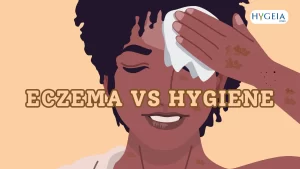Opioid overdoses have become a tragic and far-reaching crisis affecting individuals from all walks of life. These potent drugs, which include prescription pain relievers, synthetic opioids like fentanyl, and illicit substances like heroin, can cause a dangerous suppression of the central nervous system, leading to respiratory depression and, in many cases, death. To address this pressing issue and commemorate the lives lost, World Overdose Day has emerged as a global event dedicated to raising awareness, reducing stigma, and promoting action to prevent overdose-related deaths. Observed annually on August 31st, World Overdose Day serves as a rather touching reminder of the urgent need to tackle this crisis from multiple angles.
The scale of this crisis is staggering, with millions of people worldwide affected by opioid use disorder and tens of thousands losing their lives to overdoses each year. Yet, despite its far-reaching impact, drug abuse often remains shrouded in silence and stigma. It’s time to break this silence and address the issue head-on, promoting understanding, compassion, and effective solutions.
Understanding the Silence
The silence surrounding drug abuse stems from a combination of factors. Stigma and shame often prevent individuals and families from seeking help, fearing judgment and societal relegation. Additionally, misinformation and lack of awareness contribute to the echo of this silence. The truth is, many view drug abuse as a moral failing rather than recognizing it as a complex health issue, just like any other chronic condition, further hindering open conversations.
The Power of Dialogue
Preventing overdose-related deaths requires not only awareness but also education. Many overdoses are accidental and can be prevented through proper knowledge about opioid use, safer consumption practices, and the importance of having access to naloxone, a medication that can rapidly reverse the effects of an opioid overdose. The truth is, we can’t dare to break the unfortunate silence on drug abuse without advocating for open and honest dialogue. It starts from creating safe spaces for conversations, to focus-group discussion, in order to correct the various myths and misconceptions surrounding drug abuse and its victims. These conversations need to occur at multiple levels; within families, schools, workplaces, and communities. When we acknowledge drug abuse as a health concern, we shift the narrative from blame to support, paving the way for individuals to seek help without fear of judgment. No one wants to be judged for being human, flawed.
Destigmatizing Drug Abuse
To break the silence effectively, we must work together to destigmatize drug abuse. Stigmatization only isolates those struggling with substance use disorders and prevents them from seeking appropriate treatment as soon as possible. Education campaigns that provide accurate information about the nature of addiction and its impact on the brain can play a crucial role in challenging stereotypes and promoting empathy.
Empowering Communities
Communities play a vital role in addressing drug abuse. Creating support networks and access to resources can make a significant difference. Local organizations, schools, and healthcare providers can collaborate to offer prevention programs, counseling services, and harm reduction strategies. When communities stand united against drug abuse, they create a sense of belonging that can counteract the isolation often experienced by individuals affected.
Supporting Individuals and Families
Breaking the silence involves providing a helping hand to those directly affected by drug abuse. Families dealing with a loved one’s addiction need resources, guidance, and nonjudgmental support. Offering counseling, therapy, and support groups can empower families to navigate the challenges they face. It’s important to remember that addiction impacts not only the individual using drugs but also those who care about them.
Educating the Youth
Prevention is a key aspect of breaking the cycle of drug abuse. Educating young people about the risks of substance use and providing them with life skills to resist peer pressure can make a significant impact. The majority of youths engage in drug abuse for a number of reasons, which include; prescription drugs, experimentation, peer pressure, the ‘feel good’ feeling, and loneliness. Schools and youth organizations can collaborate to implement evidence-based prevention programs that empower young individuals to make informed and healthy choices. After all, you are just as healthy as the choices you make.
Seeking Professional Help
Breaking the silence on drug abuse also means encouraging individuals struggling with addiction to seek professional help. Recognizing the signs of addiction and understanding that seeking treatment is a sign of strength rather than weakness is essential. Rehabilitation centers, counseling services, and medical professionals can provide the necessary tools to overcome addiction and lead a healthier life.
Conclusion
Breaking the silence on drug abuse is a collective responsibility that requires empathy, understanding, and commitment. The fight against drug abuse and its victims is an ongoing fight that starts with each and every one of us. Together, we can turn the tide against drug abuse, promoting healthier communities and brighter futures for all. It’s time to break the silence and take action.




